SPL Phonitor One D Review
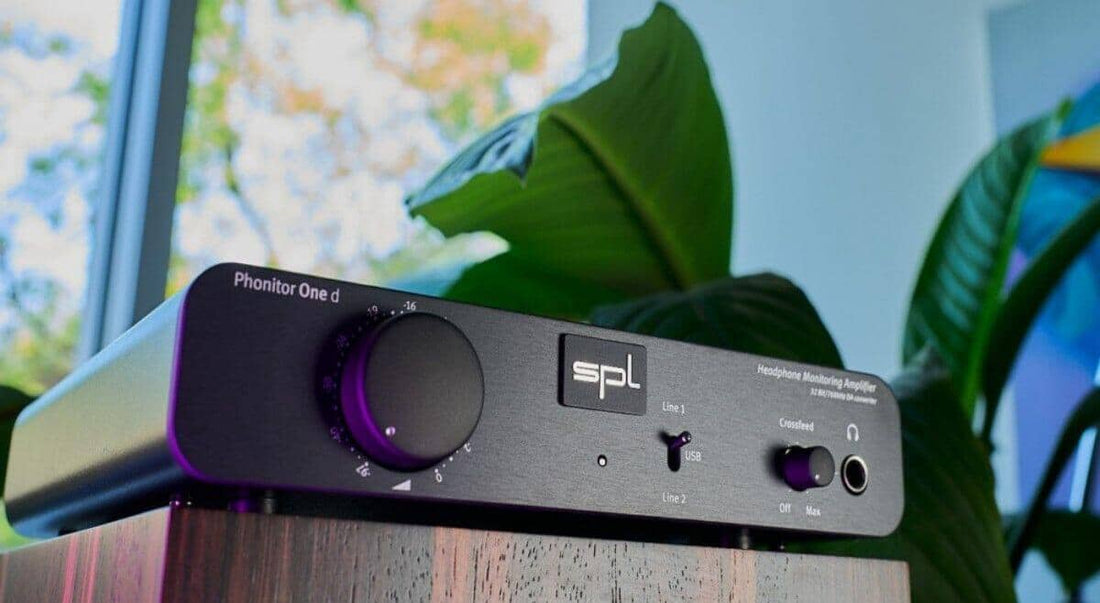
Review written by Grover Neville
On the review desk today is SPL’s Phonitor One D, the baby brother to the well known Phonitor line of amps from the German pro audio company. The Phonitor XE has been one of my top reference amps - solid state or tube - for many years now, so I was quite curious to see how the significantly less expensive and more petite little brother would compare.
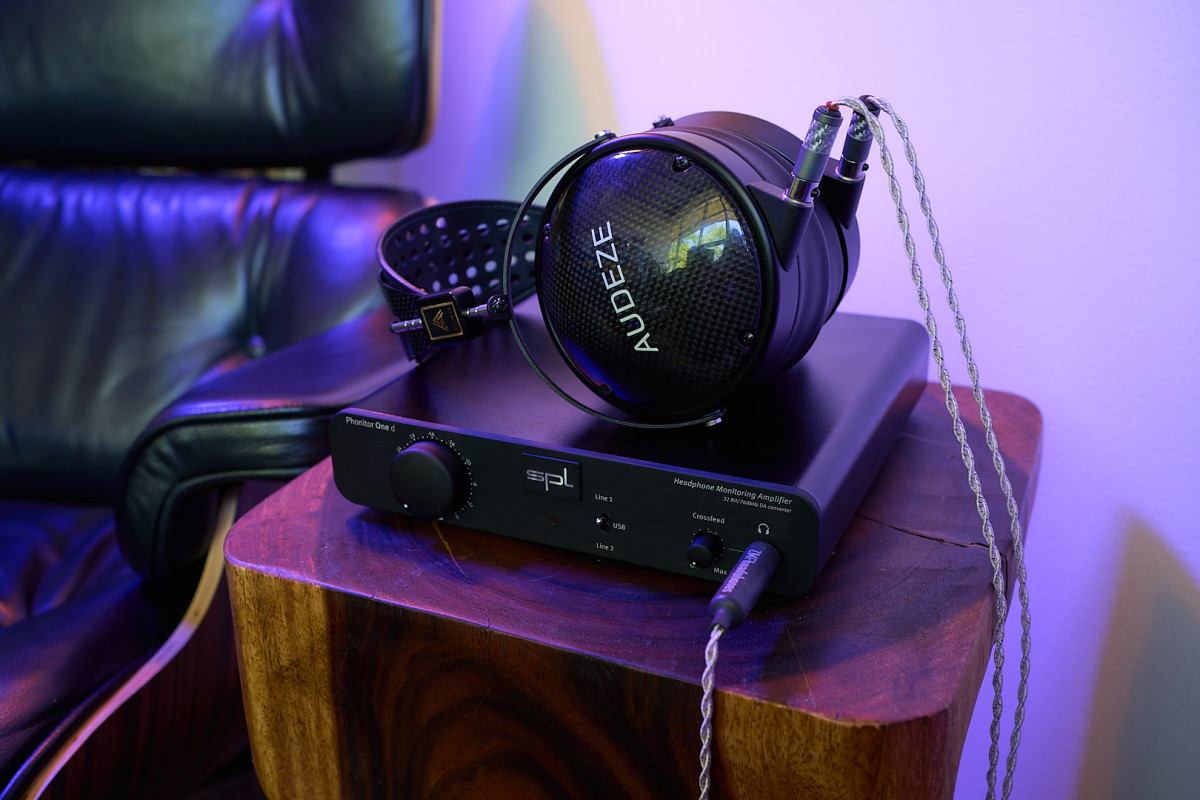
Technical Tidbits
In a departure from the rest of the Phonitor line the Phonitor One D opts for a pair of Burr Brown OPA 2134 op-amps in the primary gainstaging position rather than the company’s proprietary Voltair 120V parts. The DAC768xs is also identical to the Phonitor XE’s optional DAC unit, though lacking the DLP120 dual-lowpass analog filter technology. Analog outputs are a pair of BJTs in class A/B configuration, and output has been considerably lowered from the Phonitor XE’s trading the 1-8W, depending on impedance, output for a more modest 400mW at 47ohms and 330mW at 250 ohms.
The One D also trades the internal linear supply with Noratel transformers in for a switching power supply, and the Phonitor circuit has been shrunk down to a single ‘more or less’ knob from the multitude of angle and filter controls on the full enchilada Phonitor amplifiers. The expected single-ended TRS jack is also on the front panel as is an input switch between the line and USB DAC inputs. The rear has said USB input, a set of RCA inputs, the DC barrel connector and switch for power, and for pro users a pair each of TRS inputs and outputs.
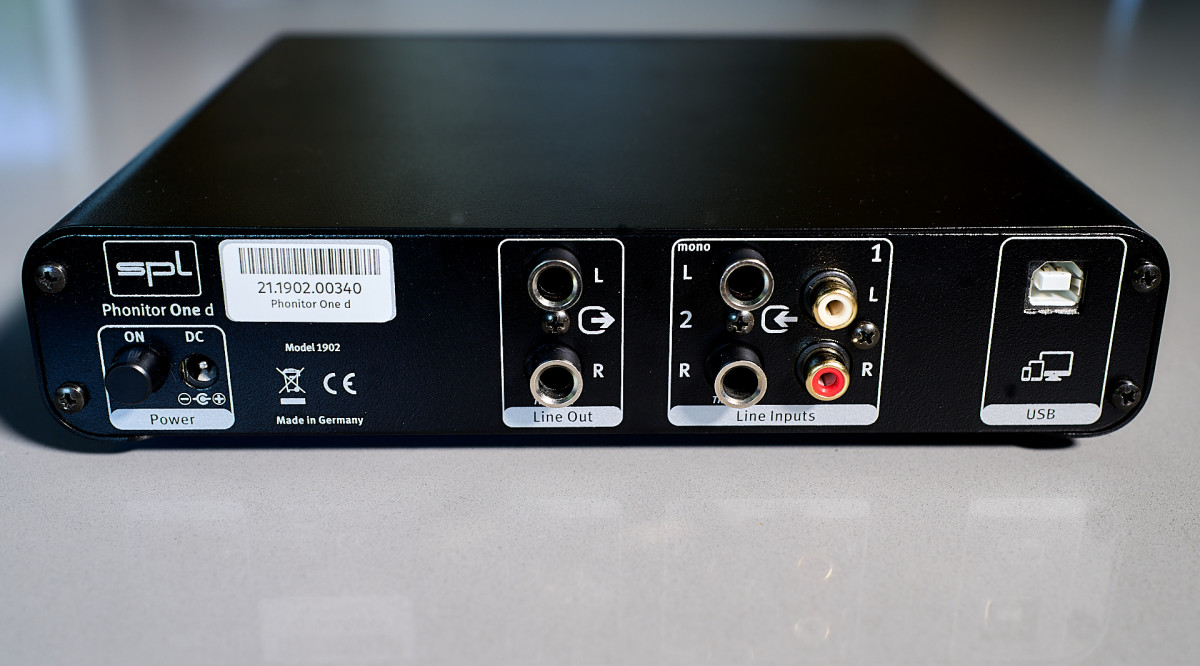
This is still a voltage driven amplification design as far as I can tell looking at the internals, so while wattage and power supply numbers only tell a small part of the story, the Phonitor One D has less in common with the full Phonitor X, XE and 2 designs than say the SE version. Another reason for cautious optimism is that SPL has significant pedigree as a pro audio company.
In my experience professional audio companies, whether software or hardware, have a very different take on gear manufacture than audiophile companies. There is very little in the way of subjectivist vs. objectivist debate. The reason is quite simply because established technical standards and simple null tests eliminate many psychoacoustic variations, and because the end user ultimately is creating a somewhat subjective and artistic product. If the gear has the desired effect in the mix, that’s all the engineer or producer really needs to know. Spec sheets don’t mean much if an equalizer or compressor gives things an undesirable character or makes them sound worse. My expectation coming in was that SPL would find a way to match the character of the Phonitor One D to the established and generally well-liked house sound of the Phonitor amps.
In the box
Unboxing the Phonitor One D was fairly straightforward, with a USB A to B cable thoughtfully thrown in. My one disappointment was how short the DC power cable ended up being. This thing is seriously, and I mean seriously short. Typically I don’t find ergonomic issues like this more than an annoyance, but the cable in this case was so short I couldn’t reach my standard-height desk from a power strip on the floor. I ended up setting the one D on a low shelf, and using longer headphone cables. I haven’t had this challenge with any other wall-warts in my system, so I was rather caught off guard by it.
Otherwise the amp is nice and understated. There are no flashy circle-shaped VU meters, but it has the nice matte front panel and sturdy metal chassis of the other SPL gear. The knob turns smoothly and has a nice, if light feel, and everything from the switches to the rubberized feet on the bottom seems like it should last a while. Other than the aforementioned short DC cable, I had no issues dropping the Phonitor XE into my system.
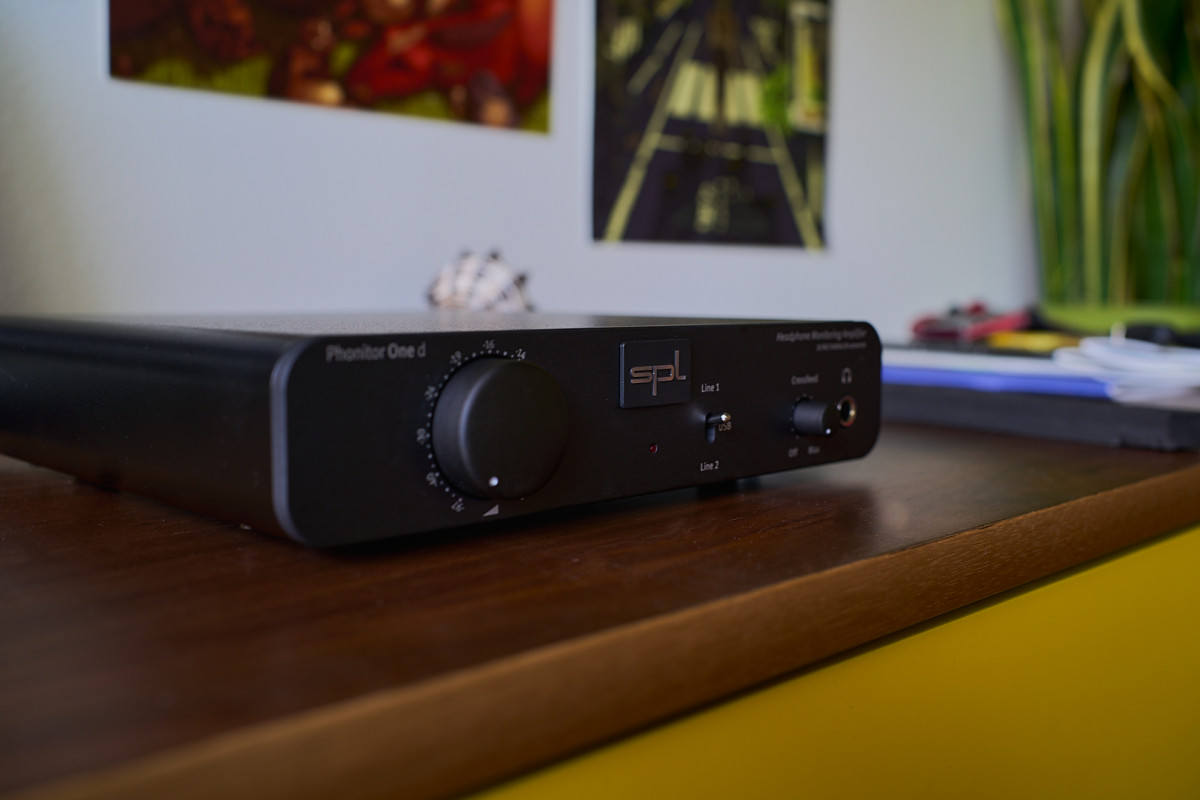
Sound Impressions
Finally, the Phonitor One D setup, I set about my listening. Now, I should note I do have extensive experience with both SPL pro audio units and the larger Phonitor amplifiers. The amplifiers are very transparent and open with a character which is distinctive for being very smooth and focused but quite organic and not at all unnatural, forced or antiseptic.
The SPL pro gear follows this trend, but I can hear that exceptional smoothness as just a hint of transient rounding, and the larger Phonitor amps do this as well, in a very subtle way. By rounding the upper midrange transient just slightly, they can give you enormous amounts of information and be hyper focused without being fatiguing at all. It’s a neat trick, and one that works very well, especially for a headphone aimed at a consumer. With the heavy limiting applied to most modern programme material you’ll never notice a slight rounding of transients anyways.
The Phonitor One D from is cut from the same general sonic cloth as the bigger Phonitors, it has very smooth grain free treble, solid bass and great dynamics with a generally smooth and tightly focused and transparent sound. Where it differs is in how well it pulls this trick off.
Where the Phonitor XE has a generally balanced and neutral sound, the One D has a slightly darker, grittier tonality to it. There is a little bit of midrange coloration comparatively, though it’s not anywhere near as warm as something like a classic Burson or a low-feedback tube amp. Still, this has the effect of making the upper midrange smoothness sound just a little more smeary. Details are still highly resolved however, and the tonality is quite similar to the Phonitor XE, but a bit like one might imagine the baby brother of that amp sounding like that.
Let’s back up a step and go through the Phonitor One D on its own merits however, because after all this is a One D review and not a comparison piece. Treble is open, detailed and natural sounding, among the unfussiest and least ‘wonky’ sounding treble of any solid state amp out there. Things are perhaps not as 3D or grainless as some amps, but they are also in excellent balance, neither bright nor warm, regardless of headphone. Everything from the Open Back Verite to the HD800 did well here, and the amp didn’t accentuate or emphasize any of the characteristics of these headphones, even the unpleasant ones. I did find a slight sense of rolloff with very power hungry planars such as my Ether 2 or Audeze LCD series headphones, but this was quite minor and generally I only heard a quarter or maybe half dB perceptual drop in frequencies above 8khz when I had an LCD-4 cranked as loud as I was willing to listen.
Moving down to the midrange, it has that smooth coherency and transparency the SPL amps are known for, with a slight warmth that I tend to associate with other gear I’ve heard that uses the Burr Brown gear. Detail retrieval is very good, and whereas some amps may sacrifice the last 5 or 10% to give you a more forgiving sound, the one D seems to only sacrifice the last 2% of detail in service of listenability. Dynamics could be stronger, but as with the treble, more sensitive headphones will likely be a better match here than power hungry planars.
Moving down to the bass, this is where I was surprised to find the most similarities to the big brother XE. Bass is tight, transparent and textured, and seems to suffer less from the slight spatial and dynamic compression effects than the midrange and treble. Texture is plentiful and for the price, I honestly can’t think of too many complaints other than the aforementioned power limitations.
The Crossfeed
I’ve been a fan of the full Phonitor crossfeed matrix on the large amps. Sadly, I don’t much care for the crossfeed setting on the One D. I personally enjoy the widest angle and a very low level with the full network, and this one is set to one of the narrowest angles with no option to change that. At the very smallest levels I found some use, but in general the effect seemed a bit too obvious, and by the halfway point, the sound became thin, images narrow and the overall effect a bit anemic. A feature of the flagship Phonitor amps was that it was hard to ever get the crossfeed to sound obviously bad. The Phonitor One D is not so graceful in this case, and though this is a personal preference, I found myself leaving the crossfeed off on this amp most of the time.
The DAC
As regards the digital section, I think this is a nice AKM digital section. It very much has the 4490 chip’s smooth and inoffensive sound, but it seems as though a little extra detail than I’m used to has been wrung out of it. There’s a level of refinement to this digital stage which surpasses a Modi 3 that I was surprised by. I never felt this DAC stage was quite as good as the Phonitor XE deserved, but despite the slight roundness and extra warmth to the One D, I do think this synergy is solid. For a $2000 flagship amp, I generally like to use a DAC that really impresses. This DAC to my ears has all the properties one would want in a DAC at this price point, being listenable, without glare, and offering a slightly above average level of detail and attack. However SPL has tuned the treble on this AKM implementation has a nice extra bit of snap that I thoroughly enjoyed. With all that said, a decent outboard DAC will still give you more here, as is often the case.
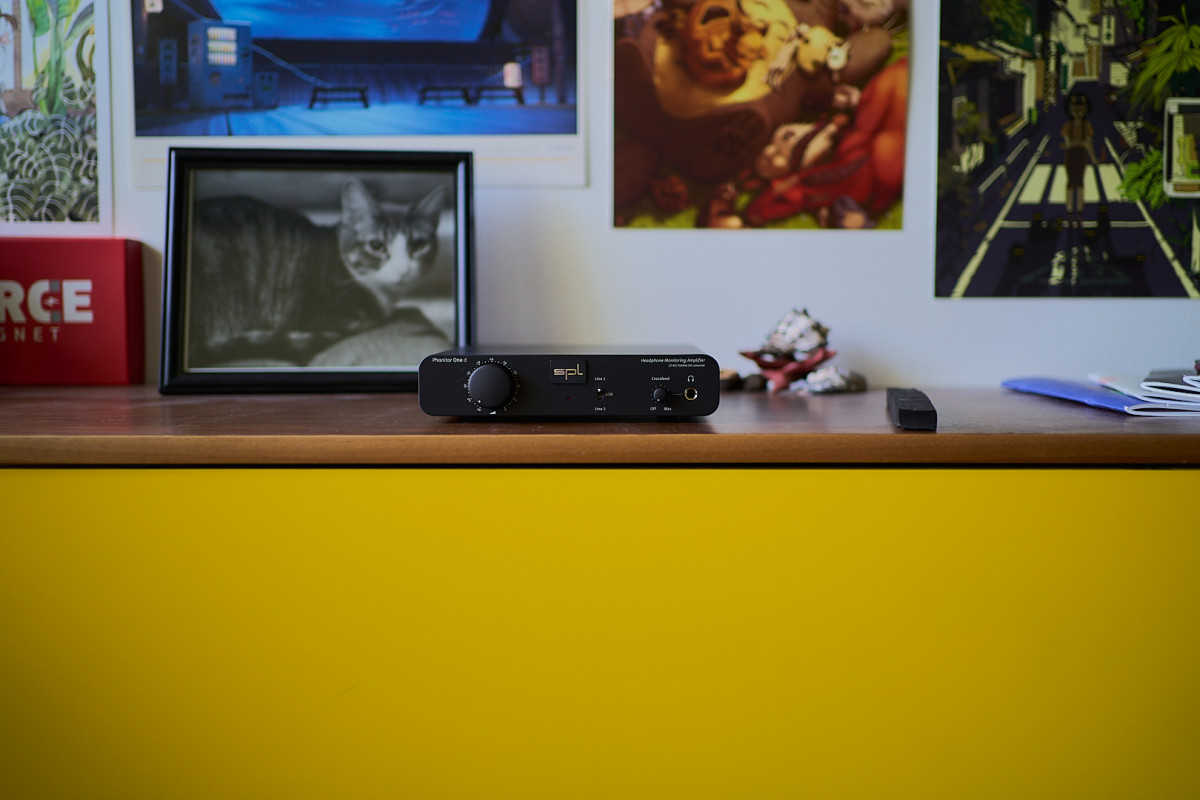
Making Sense of the Sound
Mostly I think what sticks out to me about the Phonitor One D is that it does so many things so well, that it gives me a taste of what a higher end amp will do, and it makes me want more. Where the issue comes in, is that this amp doesn’t really deliver that more, and unfortunately for me, I’ve been to the XE peak. My perspective has been colored with an understanding of how good it gets when you spend the extra money for the flagship.
Said flagship is substantially more expensive though, and here I come to a difficult question regarding the price of the One D. I like what it does as an amp stage, and as a DAC, but together the combination feels a little light on features and absolute sound quality at the price point. If I were looking to spend $500 on a unit, the SMSL SU9 DAC is a hard choice to argue with in both features and sound quality, and I’m not sure the SPL beats it unless you really value that transparent SPL sound. If I were looking to spend $1000 then I think this is quite a nice unit, though you might miss the last ounce of sound quality you could have if you spent the extra cash on a higher end amp.
The truth is that this is a difficult price point, and what does stick out is the level of refinement on offer. SPL is making mature products that don’t have any obvious weaknesses or drawbacks, and I can’t really fault it for not quite living up to it’s big brothers. If you’re using more sensitive dynamic headphones and are tired of overly bright or warm electronics, then I can see this being a good choice, especially if you want an all-in-one unit without the fuss of multiple cables. Additionally, if you dabble in music production, this is a great compact unit to take on the go, and having the transparent SPL Phonitor house sound in such a small package with USB and TRS inputs puts this in a great sweetspot for people who like to mix their audiophile and pro audio habits, no pun intended.
-Grover Neville
---
Buy the SPL Phonitor One D for the best available price.
Discuss the SPL Phonitor One D on the HEADPHONE Community Forum Here.
---
